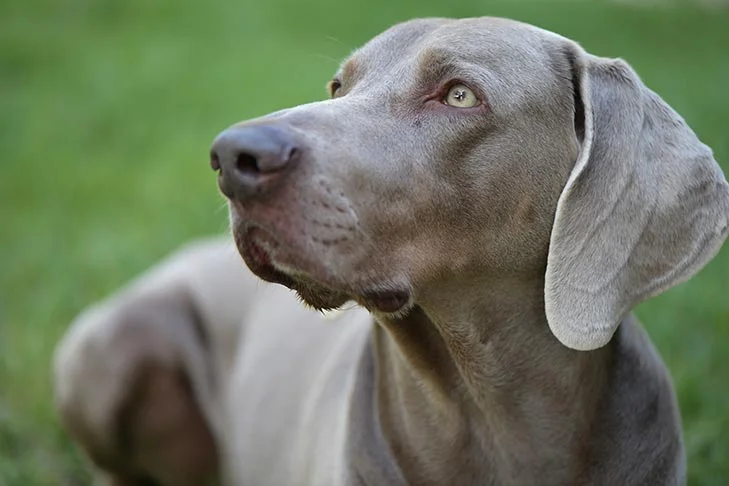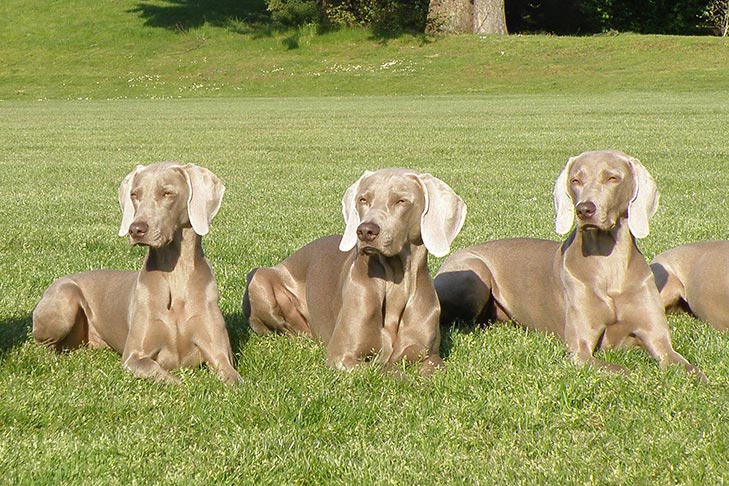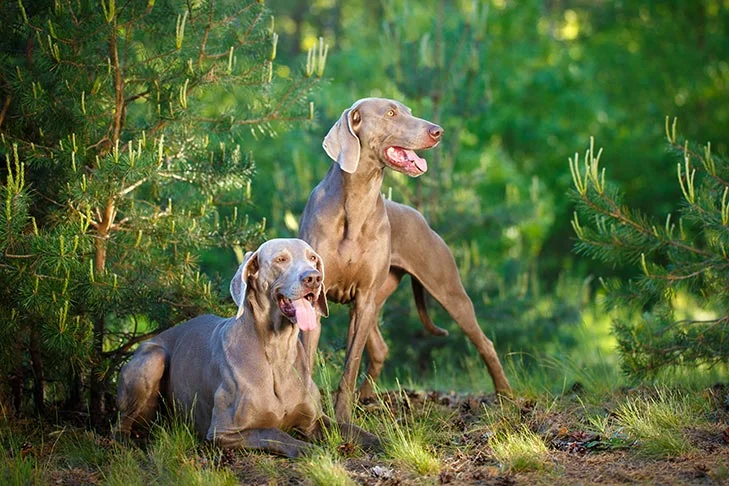Hunters and pet owners alike adore the Weimaraner, Germany’s svelte and quick “Gray Ghost,” for their friendliness, obedience, and beauty. Along with spending lots of time with their humans, they take pleasure in exercise. Male Weimaraners stand 25 to 27 inches tall at the shoulder, while females measure 23 to 25 inches. They are easily identified by their unique silvery-gray coat. With the possible exception of a tiny white spot on the chest, a properly bred Weimaraner will be solid in color. The face is friendly and intellectual, with long, silky ears framing amber or blue-gray eyes. The breed portrays a vision of sleek balance and grace overall. A Weimaraner in peak condition is a sight to behold.
Weimaraners are great with children and aspire to have a family of their own. As long as owners are devoted to keeping them physically active and mentally stimulated, they make terrific pets thanks to their easy grooming, trainability, affectionate temperament, and can-do attitude.








 Health
Health Grooming
Grooming Exercise
Exercise Training
Training Nutrition
Nutrition